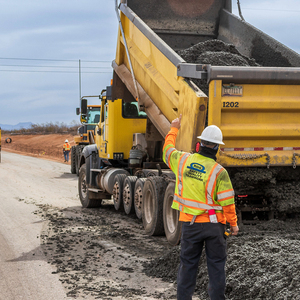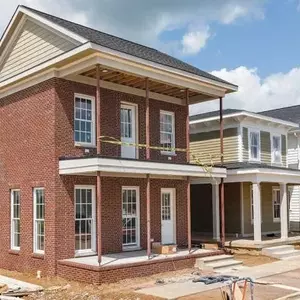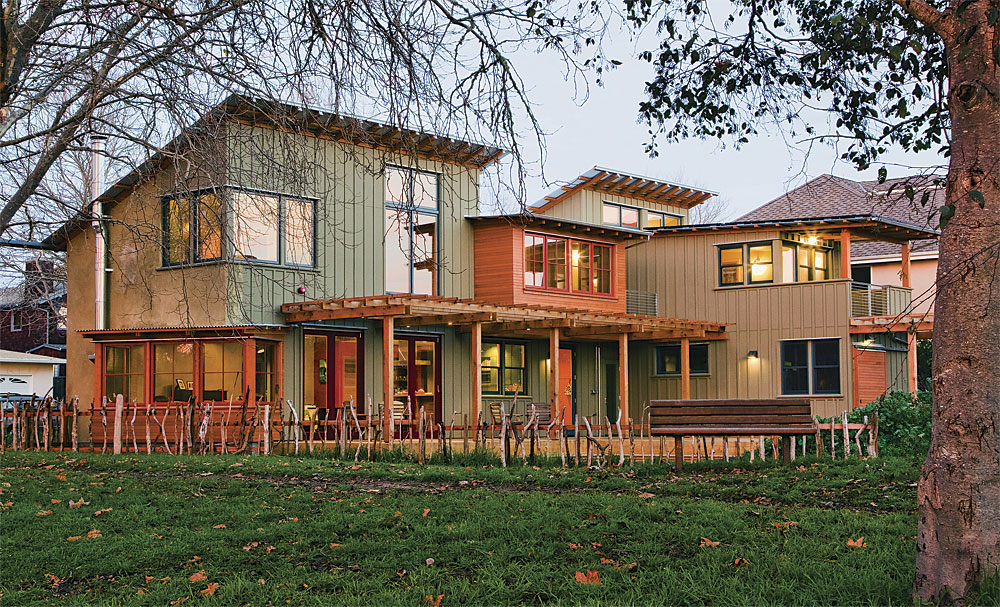
These are troubling times for conscientious architects and builders. A 2019 report from the U.N. Environment Programme offers a “bleak” outlook in progress toward controlling greenhouse gas emissions and holding off permanent climate change, and buildings have a lot to do with it.
The agency’s Emissions Gap Report—which estimates the difference, or gap, between actual and future emissions and levels that make goals of the Paris Agreement possible—shows that global emissions are going up by about 1.5% per year. It will take a 55% reduction in emissions in the next decade to hold global warming to 1.5°C, a 25% reduction to limit warming to 2°C.
Buildings are a major contributor to the problem. An estimated 39% of global CO2 emissions can be traced to the building sector: 28% to operate (heat, cool and power) buildings and another 11% in materials and construction.
Forward-looking builders have been pinning their climate hopes on designing buildings that use less energy. By lowering energy consumption with more insulation, better air sealing and high quality windows, less fossil fuel gets burned. People who live in those houses won’t spend as much money to heat and cool them, and they’ll be more comfortable. More to the point, more efficient houses mean fewer carbon emissions in the atmosphere. This is helpful for long-term carbon reductions, but not in the near term. That’s the rub. The time frame to check the global carbon problem is much shorter than the carbon benefits that high-performance building will provide over the next decade or two. The embodied carbon in these new super efficient buildings is “front-loaded,” meaning that all of it occurs when the building is erected.
Increasingly, the focus is on embodied carbon in construction—the greenhouse gas emissions associated with extracting, manufacturing, and transporting the materials needed for building. Architecture…
Weekly Newsletter
Get building science and energy efficiency advice, plus special offers, in your inbox.

This article is only available to GBA Prime Members
Sign up for a free trial and get instant access to this article as well as GBA’s complete library of premium articles and construction details.
Start Free TrialAlready a member? Log in















9 Comments
Great summary of available resources, Scott. I bet it will be useful as more architects, engineers and clients learn the importance of carbon accounting.
Great article. I worry only that readers will be scared off before getting to the key message: minimizing or avoiding use of a few egregiously bad materials will have a order of magnitude bigger impact than sweating over the details of the rest. One can boil it down the three bullet points.
1. Don't use XPS at all. Per unit volume, its impact is much worse than concrete.
2. If you must use spray foam, specify an HFO blowing agent.
3. Minmize use of concrete and steel.
Getting everyone doing that is vastly more valuable than fussing about the other details.
Also, driving trucks daily long distances to construction sites is also worth thinking about. Park a trailer at the site and commute in a small car.
>"2. If you must use spray foam, specify an HFO blowing agent."
Water blown low density spray foam (such as half pound open cell foam) is even better- much lower impact than HFO blown closed cell, with only about half the polymer per R. An inch (R7) of HFO blown 2 lb foam uses a much polymer as 4" (R14.8) of half pound open cell foam.
Also, let's not forget that from a thermal performance point of view, closed cell foam installed between framing is pretty much a waste:
https://www.finehomebuilding.com/membership/pdf/184243/021269086NRGnerd.pdf
There are times/assemblies where open cell foam can't be used without moisture concerns, but as spray foam goes open cell is the "go-to" solution until/unless it's in a location within the assembly when lower vapor permeance is necessary.
Great stuff. With the help of Michael Maines, I am committed to being more mindful of the products I use and recommend from now on.
Dana- I wanted to finally say thank you for including the open-cell option in these conversations. It was based on a comment you made in 2019 that I decided to experiment using open-cell foams in a number of roof assemblies that would have otherwise been all closed cell. This change saved the owners of these projects and the earth, substantial costs. Thanks.
>"This change saved the owners of these projects and the earth, substantial costs. Thanks."
Es mi gusto, señor.
Some roof assemblies with open cell foam might need a smart vapor retarder on the interior, but that's still a lot cheaper & lower-impact than even a half inch of closed cell foam.
It was actually your idea of combining the two products- we did 51% in closed cell and the rest in open to reach R50, Zone 6.
That's a HELL of a lot greener than 100% closed cell. The 6-7" of open cell foam for the R24-under the closed cell uses less than half the polymer of just 2" of closed cell.
Going with 4" of foil faced polyiso (labeled ~R25, derate to R20 for climate/temperature) above the roof deck and 5.5" of open cell (or better yet cellulose) under the roof deck is greener still, is more protective of the roof deck, and outperforms R25 closed cell + R24 open cell all under the roof deck. But that approach adds some complexity/cost, including the cost of a nailer deck above the foam (or nailbase panels), but allows dropping to 2x6 rafters (assuming that meets the loading requirements.
If the roof lines allow soffit to ridge venting (no hips or valleys), greener still would be 14" TJI joist rafters using half-inch asphalted fiberboard (asphalted side up, R1.3 insulation value) for insulation baffles tacked to the underside of the exterior as insulation baffles leaves 12" for fiber insulation. In a cathedralized ceiling even 2.5lbs cellulose would be sufficiently dense to not settle (3.5lbs is for walls), and would yields about R45 @ 12", for a total of (fiberboard + cellulose) of R46-R47. The webs of an I-joist have less than half the thermal bridging of 2x lumber, and it the assembly easily meets code performance on U-factor basis. With the high vapor permeance of fiberboard and 1.5" of vent channel it would not need a Class-II or tighter interior side vapor retarder as long as there was a decent pitch to the roof (4:12 or higher.) That's enough sequestered carbon to offset some of the other materials in the house.
I'm still waiting/ hoping to see GO-Lab's fiberboard insulating sheathing go into production. They bought some equipment from a German manufacturer getting out of the insulating fiberboard biz (too competitive in Germany?) and secured enough mill space in Maine, but it's not all shipped-installed-tested just yet. See:
https://golab.us/news/
Jesse Thompson offers the most succinct and best advice on this complex topic; avoid the worse materials and use as little as possible of the rest.
The last paragraph in the article mentions a consultant that offers carbon assessment of a 2,500-square-foot home for $2000 to $5000. If one truly cares about their environmental footprint, a 2500 sqft single family home (not to mention the 2 or 3-car garage) is not a good place to start.
Where we build and what we build is far more important than how we build. Living in a location that reduces -or ideally eliminates- the need for daily solo driving has much more impact in the long run than the use of straw materials.
A home of good proportions and good design (how many households really “need” more than 1200 sqft?) in a multifamily is a much sounder approach. It doesn’t need to be a large apartment complex to rip much of the benefits. The quintessential tree-decker style found in New England requires a fraction of the land, and only one foundation and one roof for 3 to 6 living units. There is much less surface to insulate heat and cool, and still plenty of privacy and light; it’s hardly claustrophobic. A full basement can still provide ample space for storage, tools, hobby etc.
One of the main drawbacks of older -and newer when the builder cut corners- multifamily is the lack of sound insulation. Nowadays properly installed air and sound insulation (sound clips, resilient channel and batt insulation) go a long way in addressing those issues without breaking the bank.
With regard to SPF, the industry has developed ISO-compliant EPDs that assess the environmental impacts of open and closed cell SPF (with both HFC and HFO blowing agents). They can be found here: https://www.astm.org/CERTIFICATION/EpdAndPCRs.html
Log in or become a member to post a comment.
Sign up Log in